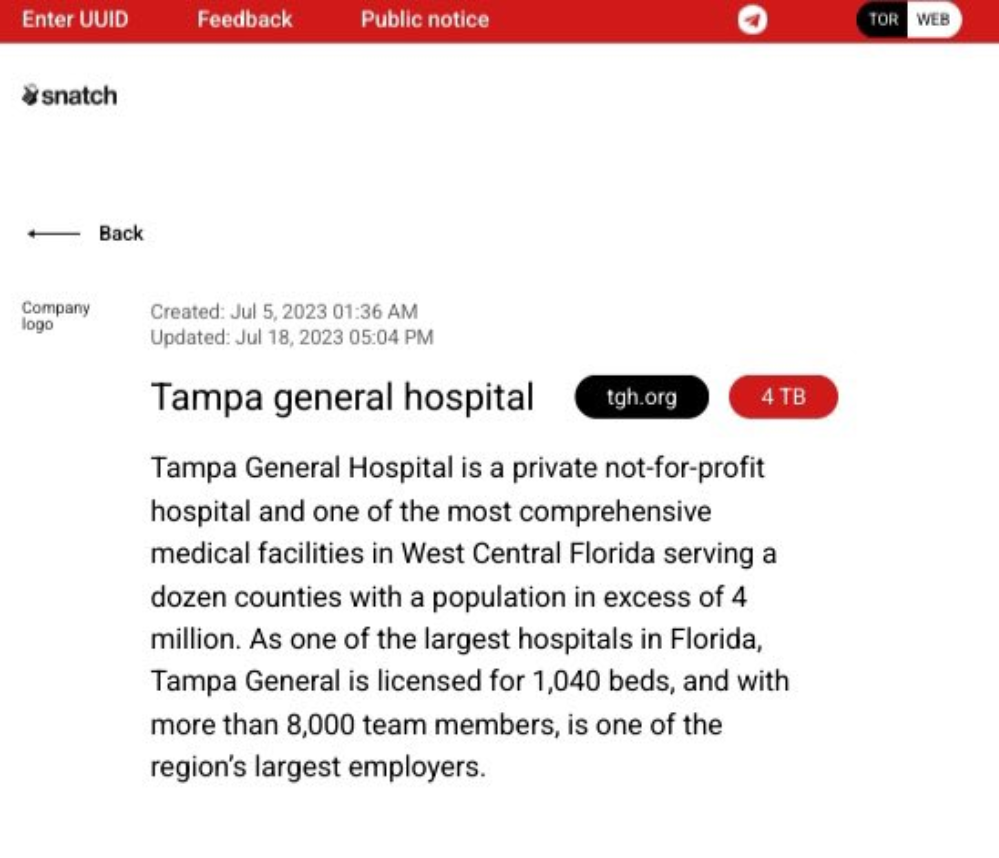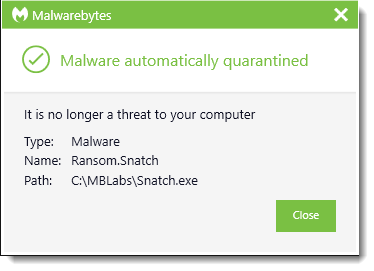The Tampa General Hospital (TGH) has promised to reach out to individuals whose information has been stolen by a ransomware group.
In a cybersecurity notice, TGH said it noticed unusual activity on its computer systems on May 31, 2023.
“Fortunately, TGH’s monitoring systems and experienced technology professionals effectively prevented encryption, which would have significantly interrupted the hospital’s ability to provide care for patients.”
While that is good news from a healthcare perspective, the ransomware operators did obtain something of value. An investigation learned that an unauthorized third party accessed TGH’s network and obtained files from its systems between May 12 and May 30, 2023.
Further investigation showed that some patient information was included. The information varied from person to person, but may have included names, addresses, phone numbers, dates of birth, Social Security numbers (SSNs), health insurance information, medical record numbers, patient account numbers, dates of service and/or limited treatment information used by TGH for its business operations.
According to TGH, the criminals did not access the hospital’s electronic medical record system.
TGH says it is mailing letters to individuals whose information may have been compromised, and will provide complimentary credit monitoring and identity theft protection services to those whose Social Security numbers were accessed.
There are some actions you can take if you are, or suspect you may have been, the victim of a data breach.
- Check the vendor’s advice. Every breach is different, so check with the vendor to find out what’s happened, and follow any specific advice they offer.
- Change your password. You can make a stolen password useless to thieves by changing it. Choose a strong password that you don’t use for anything else. Better yet, let a password manager choose one for you.
- Enable two-factor authentication (2FA). If you can, use a FIDO2-compliant hardware key, laptop or phone as your second factor. Some forms of two-factor authentication (2FA) can be phished just as easily as a password. 2FA that relies on a FIDO2 device can’t be phished.
- Watch out for fake vendors. The thieves may contact you posing as the vendor. Check the vendor website to see if they are contacting victims, and verify any contacts using a different communication channel.
- Take your time. Phishing attacks often impersonate people or brands you know, and use themes that require urgent attention, such as missed deliveries, account suspensions, and security alerts.
Snatch ransomware
On July 18, 2023, Snatch ransomware group claimed responsibility for the data theft on its leak site.

At Malwarebytes, we’ve been tracking the Snatch group since 2019. The group is suspected to operate from Russia. Back in 2019, the group stood out because it deployed a somewhat new technique for ransomware which forced the affected machine to reboot into safe mode without networking. Safe mode starts Windows in a basic state, using a limited set of files and drivers. It’s intended for troubleshooting, but since many monitoring tools will not work in safe mode, it allowed for an undisturbed and quicker encryption process. By choosing the “without networking” mode, administrators lose view of the system. The Snatch ransomware added itself as a service which ran in safe mode. Interestingly, for some reason the group no longer uses that method.
Their most common attack vectors include brute-force attacks against vulnerable, exposed services such as RDP, VNC (Virtual Network Computing), and TeamViewer. Programmed in Go, the ransomware component is separate from the data stealer. We have not seen the multi-platform capabilities of Go put to use, and only Windows machines are affected.
Malwarebytes detects the Snatch ransomware as Ransom.Snatch.

How to avoid ransomware
- Block common forms of entry. Create a plan for patching vulnerabilities in internet-facing systems quickly; and disable or harden remote access like RDP and VPNs.
- Prevent intrusions. Stop threats early before they can even infiltrate or infect your endpoints. Use endpoint security software that can prevent exploits and malware used to deliver ransomware.
- Detect intrusions. Make it harder for intruders to operate inside your organization by segmenting networks and assigning access rights prudently. Use EDR or MDR to detect unusual activity before an attack occurs.
- Stop malicious encryption. Deploy Endpoint Detection and Response software like Malwarebytes EDR that uses multiple different detection techniques to identify ransomware, and ransomware rollback to restore damaged system files.
- Create offsite, offline backups. Keep backups offsite and offline, beyond the reach of attackers. Test them regularly to make sure you can restore essential business functions swiftly.
- Don’t get attacked twice. Once you’ve isolated the outbreak and stopped the first attack, you must remove every trace of the attackers, their malware, their tools, and their methods of entry, to avoid being attacked again.
Malwarebytes EDR and MDR remove all remnants of ransomware and prevents you from getting reinfected. Want to learn more about how we can help protect your business? Get a free trial below.











